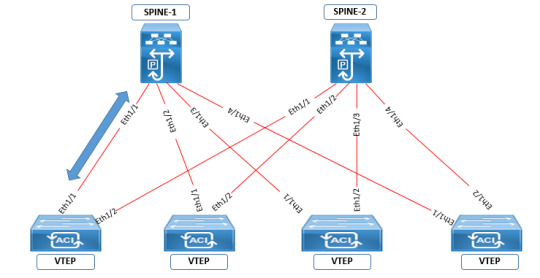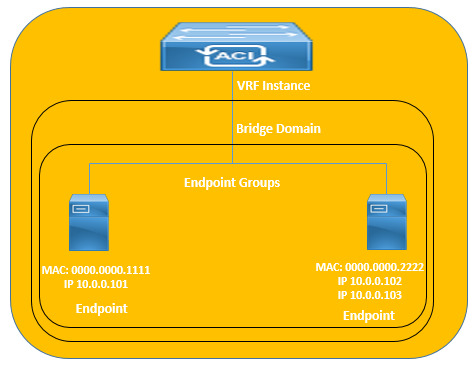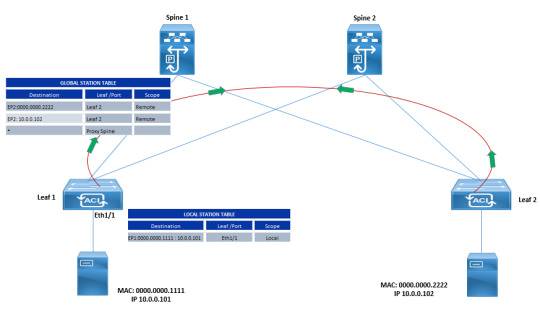#DataCenterTechnology
Explore tagged Tumblr posts
Text
Co-Packaged Optics Market Future Trends Shaping Data Centers and High-Speed Networking Solutions
The co-packaged optics market is undergoing transformative changes, driven by rising data consumption, the growth of AI and machine learning applications, and the increasing demand for faster and more energy-efficient data centers. Co-packaged optics (CPO), which integrate optical components with switches or processors on a single package, offer promising solutions for overcoming the limitations of traditional pluggable optics in high-speed networking environments.

One of the most defining future trends in the co-packaged optics market is the need for higher bandwidth. Traditional interconnect methods are beginning to show limitations as data rates exceed 400 Gbps and move towards 800 Gbps and beyond. Co-packaged optics are being adopted by hyperscalers and cloud service providers due to their ability to handle such massive data throughputs with reduced power consumption and improved thermal management. These capabilities are essential in meeting the performance requirements of AI and large-scale machine learning workloads, where latency and efficiency are critical.
Energy efficiency is another core trend shaping the market's future. Data centers worldwide are grappling with power and cooling challenges, especially as performance demands soar. Co-packaged optics reduce the electrical-to-optical conversion distances, resulting in lower power usage and heat generation. This shift is aligned with global sustainability goals, encouraging major players to adopt more energy-conscious technologies without compromising on speed or scalability.
Integration with next-generation switch architectures is also becoming a central theme in the co-packaged optics market. As chip designers push toward 51.2 Tbps and even 102.4 Tbps switch platforms, conventional pluggable optics struggle to keep pace due to density and power limitations. CPO enables tighter integration of optics and electronics, optimizing the physical layout for better signal integrity and reduced footprint. This compatibility is opening new doors for designing modular and scalable data center networks capable of evolving alongside technological advancements.
Another emerging trend is the adoption of silicon photonics in co-packaged optics solutions. Silicon photonics technology offers compact, cost-effective, and high-bandwidth optical interconnects. As this technology matures, it's enabling broader deployment of CPO across different tiers of data center infrastructure. The synergy between silicon photonics and co-packaged optics allows for standardized platforms, reducing development complexity and accelerating time-to-market for new solutions.
The co-packaged optics ecosystem is also expanding, with a growing number of collaborations and consortia forming among chip manufacturers, optical component vendors, and system integrators. Initiatives like the Optical Internetworking Forum (OIF) and the Consortium for On-Board Optics (COBO) are playing vital roles in defining open standards and interoperability guidelines. These efforts ensure that CPO solutions can be deployed across various vendor ecosystems, enhancing their appeal to data center operators seeking long-term investment security.
As the market progresses, manufacturing challenges are being addressed through innovations in packaging techniques and materials. Co-packaging involves complex thermal management and alignment requirements. However, advancements in 3D packaging, micro-lens arrays, and automated alignment systems are making it feasible to produce reliable and scalable CPO products. These innovations are crucial for lowering costs and improving the accessibility of co-packaged optics for medium and small-scale deployments.
Another important future trend is the convergence of AI workloads and networking infrastructure. AI and machine learning require high-speed, low-latency interconnects between computing nodes. Co-packaged optics offer the bandwidth and proximity necessary to support such workloads efficiently. This synergy is likely to drive deeper integration of CPO in AI-centric data centers and edge computing platforms, enabling faster model training and data analytics.
Looking ahead, the global expansion of 5G and edge computing will further push the need for distributed, high-speed optical connections. Co-packaged optics will not remain confined to large hyperscale data centers; they are expected to find roles in edge data hubs and 5G base stations where compact size, speed, and energy efficiency are equally vital.
In conclusion, the co-packaged optics market is on the cusp of major transformation. With trends such as increasing bandwidth needs, energy efficiency, tighter switch integration, adoption of silicon photonics, and growing ecosystem collaboration, the technology is becoming an integral part of next-generation network infrastructure. These shifts signal a robust future for CPO, where its potential to redefine data connectivity, performance, and sustainability is only beginning to be realized.
0 notes
Text

Data Center Liquid Cooling Market worth $21.3 billion by 2030
The report "Data Center Liquid Cooling Market by Component (Solution and Services), End User (Cloud Providers, Colocation Providers, Enterprises, and Hyperscale Data Centers), Data Center Type, Type of Cooling, Enterprise, and Region - Global Forecast to 2030", is projected to grow from USD 4.9 billion in 2024 to USD 21.3 billion by 2030, at a CAGR of 27.6% during the forecast period. The data center liquid cooling market has been increasing as a result of greater data center densities, as well as the need for energy efficiency and cost savings, improvements in cooling technology, and strict regulatory standards. Furthermore, a need for high-performance computer systems and state subsidies for energy-saving technologies also facilitate the adoption process.
Download pdf- https://www.marketsandmarkets.com/pdfdownloadNew.asp?id=84374345
By component, the services segment is estimated to be the fastest-growing data center liquid cooling segment from 2024 to 2030.
From 2024 to 2030, it is anticipated that the services part of the data center liquid cooling market will be the quickest expanding sector. Service providers for data center liquid cooling offer system integration services that incorporate liquid cooling technology into the IT infrastructure of the data center. By helping data center operators to install and maintain effective liquid cooling solutions, service segments guarantee the dependability, efficacy, and efficiency of the cooling structure within the data center setting.
By data center type, the small and mid-sized data center segment is estimated to be the fastest-growing segment of the data center liquid cooling market from 2024 to 2030.
By size segment of the data center liquid cooling market, small and mid-sized data center is projected to be the fastest-growing segment from 2024 to 2030. Small and midsize data centers deploy more complex IT hardware such as high-performance servers, storage systems, and networking devices; they also increase power density. Larger heat loads produced by these systems may make it hard for conventional air-cooling techniques to cope up with. An efficient way of managing increasing needs for heat dissipation may be done using liquid cooling that ensures high performance and reliability of equipment.
By end user, the hyperscale data center segment is estimated to be the fastest-growing segment of the data center liquid cooling market from 2024 to 2030.
By end-user segment, leading user influenced data center liquid cooling systems market specifically hyperscale data centers are expected to be the fastest growing segment from 2024 up to 2030. A lot of servers and IT devices occupy a relatively small space in a hyperscale data center. It falls within this compact architecture that great amounts of heat are generated and need to be dissipated properly. Compared with traditional air-cooling methods, liquid cooling offers better heat dissipation capabilities. Liquid cooling systems work more effectively by coming into direct contact with heated elements thereby absorbing their energy in order to maintain optimal operational temperatures as well as preventing thermal bottlenecks.
By enterprise, the BFSI segment is estimated to be the fastest-growing data center liquid cooling segment from 2024 to 2030.
The BFSI segment of the data center liquid cooling market is anticipated to see the highest growth from 2024 to 2030. BFSI sector employs intricate financial algorithms and data-driven applications that require great processing capabilities. Therefore, highly scalable servers, storage devices, as well as networking gear are employed generating immense heat. Liquid cooling is gaining ground in order for these operations that consume a lot of computing power to effectively manage their heat removal needs and ensure maximum performance while avoiding temperature-related issues.
By type of cooling, the immersion liquid cooling segment is estimated to be the fastest-growing data center liquid cooling segment from 2024 to 2030.
Immersion Liquid Cooling is expected to be the fastest-growing segment in the data center liquid cooling market according to the types of cooling. Immersion liquid cooling is comparatively more energy efficient than air cooling methods. A dielectric liquid can be used to instantly submerge IT equipment thus expediting heat transfer away from them and evading air conditioning systems and fans which consume a lot of energy. Consequently, this results in greater savings on electricity costs for the data center, less power usage as well as lower operating expenditures.
Asia Pacific is estimated to be the fastest-growing region in the data center liquid cooling market during the forecast period.
The data center liquid cooling market is expected to grow fastest in Asia Pacific during the forecast period. In the region, there is an increasing trend of data center investments as a result of several factors including rapid uptake of cloud computing, increasing amount of data-sensitive businesses and speedy digital transformation. The raising importance laced with data centers has made effective cooling techniques such as liquid cooling technologies become necessary. The data center liquid cooling market in Asia Pacific will experience growth driven by efficient cooling solutions aimed at improving Power Usage Effectiveness (PUE).
Rittal GmbH & Co. KG (Germany), Vertiv Group Corp. (US), Green Revolution Cooling Inc. (GRC) (US), Submer (Spain), Schneider Electric (France), Liquid Stack Holding B.V(US), Iceotope Precision Liquid Cooling (UK), COOLIT SYSTEMS (Canada), DUG Technology (Australia), DCX Liquid Cooling Systems (Poland), Delta Power Solutions (Taiwan), Wiwynn (Taiwan), LiquidCool Solutions, Inc. (US), Midas Immersion Cooling (US), BOYD (US), Kaori Heat Treatment Co,. Ltd (Taiwan), Chilldyne, Inc. (US), Asperitas (Netherlands), and STULZ GMBH (Germany) are the key players in data center liquid cooling market.
#DataCenterCooling#LiquidCooling#DataCenterSolutions#GreenDataCenters#SustainableCooling#EnergyEfficiency#DataCenterTechnology#CoolingSolutions#DataCenterTrends#CloudInfrastructure#DataCenterInnovation#CoolingTechnology#DataCenterEfficiency#FutureOfDataCenters#ITInfrastructure#ServerCooling#DataCenterOptimization#DataCenterManagement#HighPerformanceComputing#EcoFriendlyCooling
0 notes
Text







Secure your future in networking with #SDN proficiency. Learn to design, deploy, and manage software-defined networks prioritizing security and scalability. Shape the digital landscape with innovative solutions. https://www.dclessons.com/vxlan-forwarding-in-aci
#Networking#DataCenterLessons#ACI#VXLAN#Networking101#NetworkVirtualization#Cisco#DataCenterTechnology#NetworkForwarding#TechEducation#CloudInfrastructure#NetworkConfiguration#NetworkingTips#CiscoACI#NetworkSecurity#ITInfrastructure#NetworkManagement#ITLearning#CloudNetworking#TechTutorials#dclessons
1 note
·
View note